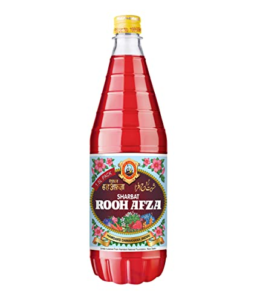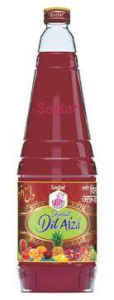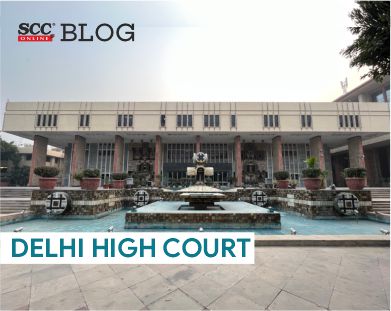Delhi High Court: In an appeal filed by Hamdard National Foundation (appellants) challenging the order passed by Single Judge rejecting the infringement suit filed by the appellant-plaintiff and further seeking permanent injunction restraining Sadar Laboratories (the respondent) from using the trade mark ‘SHARBAT DIL AFZA’, which was deceptively similar to the registered mark of the appellants ‘ROOH AFZA’, a Division Bench of Vibhu Bakhru and Amit Mahajan, JJ. held that the ad interim order dated 15-12-2020, the Single Judge recorded the statement made on behalf of the respondent (defendant) that the respondent would not manufacture and sell syrups and beverages falling under Class 32 under the impugned trademark ‘DIL AFZA’, as absolute till the final disposal of the suit.
Background
The appellant engaged in the business of manufacturing and selling Unani and ayurvedic medicines, oils, syrups and non-alcoholic beverages amongst other products for over a century, is also the owner of the trade mark ‘HAMDARD’ and ‘ROOH AFZA’, used in respect of many goods and services offered by the Hamdard Group. The appellants claimed that the trade mark ‘HAMDARD’ was now recognized as a house mark of the Hamdard Group of entities, and it was a well-known mark within the meaning of Section 2(zg) of the Trade Marks Act, 1999 and was included in the list of such well-known marks.
Submissions on behalf of the Appellants
Counsel for the appellants claim that the mark ‘ROOH AFZA’ was a highly reputed mark and had acquired immense goodwill in relation to sharbats (non-alcoholic sweet beverages). In 2020, the appellants became aware from an advertisement in a daily newspaper that the respondent had launched its sharbat bearing the mark ‘DIL AFZA’. The appellants claimed that the trade mark ‘DIL AFZA’ was deceptively similar to their trademark ‘ROOH AFZA’. Further, the trade get-up and design of the product, including the bottle used by the respondent, was deceptively similar to the trade dress and get-up of the appellants’ product.
Submissions on behalf of the Respondent
The respondent claimed that it had been using the said impugned trade mark in respect of its Unani medicines and Unani medicated syrups since 1949, and its syrups and beverages since 2019. Further, it was claimed that the respondent had coined the impugned trademark by joining separate words ‘DIL’ and ‘AFZA’. These were words from the vocabulary of the Urdu language and freely translated in English meaning ‘heart’ and ‘increasing’/‘giver of plenty’. The appellants could not claim any exclusive right over the word ‘AFZA’ solely by virtue of being a proprietor of a composite mark ‘ROOH AFZA’. The registration of the mark ‘ROOH AFZA’ did not grant an exclusive right of use in respect of any part of the said trade mark.
Analysis, Law, and Decision
The Single Judge, after evaluating the material placed on record, concluded that, prima facie, the appellants’ claim of having built huge reputation and goodwill in respect of the trade mark ‘ROOH AFZA’, cannot be rejected. Thus, it was held that the appellants could claim exclusivity only in respect of the complete trade mark ‘ROOH AFZA’ and not the two words ‘ROOH’ and ‘AFZA’– that constituted the trade mark.
The Court opined that it was not difficult to conceive that a person who looks at the label of DIL AFZA may recall the label of ROOH AFZA as the word ‘AFZA’ was common and the meaning of the words ‘ROOH’ and ‘DIL’, when translated in English, were commonly used in conjunction. Further, it was opined that “the commercial impression of the impugned trade mark was deceptively similar to the appellant’s trade mark and prima facie, the appellant’s mark was a strong mark, and the requirement of protection varies inversely with the strength of the mark; the stronger the mark, the higher the requirement to protect the same.
The Court also compared the two labels. It is as follows:


The Court noted that it is clear from the aforesaid images that there is a similarity in the trade dress of the two products. Both products have the same deep red colour and texture and the overall impression of the product, the fact that both the bottles are transparent and the colour of the liquid is the same would, undoubtedly, add to the impression of the product that may be recalled by any consumer.
Thus, the Court was of the view that the appellant’s mark required a high degree of protection, and it was essential to ensure that the competitors kept a safe distance from the said mark. Therefore, the Court set aside the order of the Single Judge and held that the interim order passed earlier was absolute and would continue till the disposal of the suit. Further, the Court directed the respondents to not manufacture and sell any product under Class 32 under the impugned trade mark ‘DIL AFZA’ till the disposal of the suit.
[Hamdard National Foundation (India) v. Sadar Laboratories Pvt. Ltd., 2022 SCC OnLine Del 4523, decided on 21-12-2022]
Advocates who appeared in this case :
For the Appellants: Advocate Praveen Anand;
Advocate Dhruv Anand;
Advocate Udita Patro;
For the Respondent: Senior Advocate Kirti Uppal;
Advocate N.K. Kantawala;
Advocate Pravez Sharma;
Advocate Prakhar Sharma;
Advocate Riya Gulati;
Advocate Ikshita Parihar;
Advocate Amaya M. Nair;
Advocate Kunal Khanna;
Advocate Swapnil Chaudhary.







